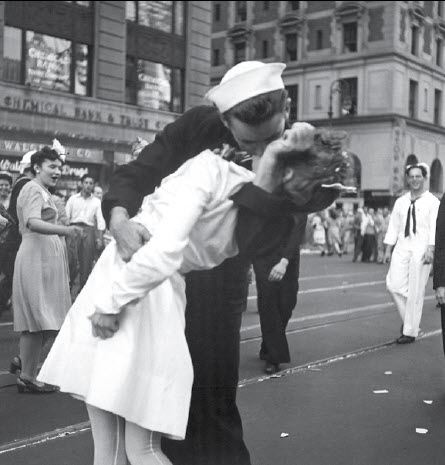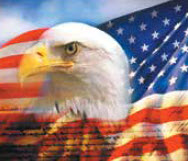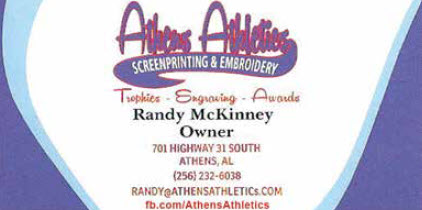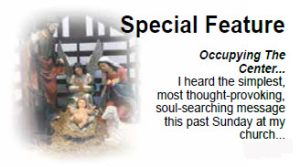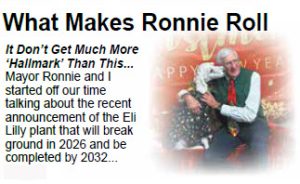V-J Day, or Victory Over Japan Day, happened officially on August 14, 1945, and the spontaneous celebrations that occurred everywhere ended up being the source of the most iconic photograph of the entire war. I am talking about none other than the “sailor-suddenly-kissing-the-nurse-who-we-later-found-out-was-a-dental-assistant” pic. They say one picture is worth a thousand words, and in this case, there are actually two pictures. In this edition of Soldier, we will wisely use the one that is public domain because it turns out that the other, which is known in the biz as V-J Day In Times Square by Albert Eisenstaedt, is copyrighted from here to Kalamazoo.
Here is the story. News broke that Japan had surrendered, and President Harry Truman was due to make a radio announcement at 7 p.m. Eastern Time. Nonetheless, while people waited to hear from the president, near euphoria erupted. Albert Eisenstaedt was among the celebrators, and with his Leica camera took only four shots. He, as only a seasoned photographer can, quickly assessed the factors that would make for great composition and snapped what he saw. Mr. Eisenstaedt later said that if the woman had been in a dark dress, and the sailor in dress whites, he wouldn’t have taken the shot. He also was careful to make sure that Times Square could be easily identified in the background.
V-J Day In Times Square came out a week later in Life Magazine, which featured a 14-page spread that showed similar events which had taken place all over the country. Albert Eisenstaedt only allowed four outlets to publish, and closely guarded every aspect of the photo’s reproduction for the rest of his life. Fifty years later, nearly to the day, Albert Eisenstaedt signed a few copies of his photo, and eight hours later passed away from cancer.
Consider Victor Jorgenson, the creator of the photo used here. He was a photojournalist for the U.S. Navy, who was within a few feet of Eisenstaedt. He did not get the same details of Time Square in the back of the photo, and some say the angle of the pic was less interesting than Eisenstaedt’s. However, what he captured, in my view, could have gotten the job done even if Eisenstaedt hadn’t been on hand, and it needs to be remembered that Jorgenson never received an extra penny for his work. Why? Because he was serving the Navy, and thus had no right to copyright it as his own work. He entitled his version Kissing The War Goodbye, a title I find more than fitting.
For decades, people came out of the woodwork claiming to be the sailor as well as the “nurse.” Life tried to find the real participants, and controversy remains to this day. Some say the “nurse” opened her arms to the sailor, others say the kiss was not consensual. I hope that it was, because of the victory itself. And, at the risk of appropriating the late, great Paul Harvey, that is at least some of “the rest of the story” of one of the most famous photographs ever.
By: Ali Elizabeth Turner


